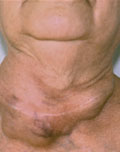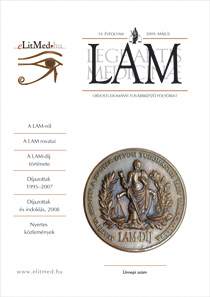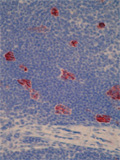The eLitMed.hu medical portal uses computer cookies for convenient operation. Detailed information can be found in the Cookie-policy.
Lege Artis Medicinae - 2009;19(01 klsz)
Content
[THE EPIDEMIOLOGY OF CEREBROVASCULAR DISEASES IN HUNGARY AFTER THE MILLENNIUM]
[INTRODUCTION - Here we present the descriptive epidemiology of stroke in Hungary including mortality, morbidity, functional limitation and inpatient care based on the most recent health statistical data. METHODS - Mortality data were analysed by direct and indirect standardisation, and geographical mapping based on empirical Bayesian smoothing. Morbidity data were obtained from the General Practitioners’ Morbidity Sentinel Station Program and the National Health Surveys. The latter also provided data on functional limitation. Data on inpatient service were taken from the European Hospital Morbidity Database of WHO. RESULTS - Hungarian stroke mortality continued to decrease in recent years, and the slope of the decrease was larger than in Western Europe. Stroke mortality was highest in the Northern- Hungarian Region, and in Somogy and Zala counties. The incidence of stroke was 1.5-2 times higher than in the developed countries in most age groups. Over 64 years of age, a decline of stroke incidence was observed, especially in men. In this age group approximately 10% of men and 7% of women had already had a stroke. Of these patients more than 10% needed assistance to get out of the bed, dress up, or eat. Hospitals reported more than 60 000 stroke cases in 2005. CONCLUSION - Despite the promising trends in stroke mortality and now also in morbidity, both indices are still rather high in Hungary compared to those in Western-Europe. The relatively favourable epidemiological changes, however, may be overridden by the increased stroke burden resulting from the aging of the population.]
[STATE-OF-THE ART COMPLEX TREATMENT OF THYROID CANCERS]
[Thyroid cancers derived from follicular epithelial cells are histologically classified as papillary, follicular and anaplastic. Cancers that originate from parafollicular, or C-cells, are termed medullary carcinomas. Their annual incidence is fairly low; 3 to 7 cases per 100 000 people. After the Chernobyl disaster, however, thyroid cancers have received much attention. They often occur at young age, and frequently and early give metastases. They typically grow slowly and have a good prognosis even in the metastatic stage. The main prognostic factors include age, tumour size and extent, the completeness of surgical removal, distant metastases and tumour grade. Based on these parameters, they are classified into high-risk and low-risk groups. There are no prospective randomized studies available on the optimal treatment of thyroid cancers. Their biological aggressiveness differs according to geographic location, which explaines why the management of thyroid carcinomas has not been standardized internationally. Contrary to America and Australia, in Europe there are several endemic goitre regions, and background radiation is higher. It is generally accepted that here the standard therapy of choice is total thyreoidectomy with adequate lymph node dissection followed by postoperative radioiodine ablation. It is a reasonable demand to minimize the higher morbidity associated with radical surgery (e.g., recurrent nerve palsy, postoperative hypoparathyroidism) below 1%. It is recommended that such operations are performed by experienced thyroid surgeons in centres with multidisciplinary endocrine teams.]
[STEM CELL THERAPY AFTER ACUTE MYOCARDIAL INFARCTION]
[Left ventricular remodelling and chronic heart failure as a consequence of myocardial infarction is a major problem despite of the everimproving therapeutic options. The available treatment methods have fairly limited success in preventing the development of these changes. Myocardial regeneration with stem cell treatment is a promising therapeutic alternative. Although the results should still be confirmed in large, randomised, multicentric controlled trials, data from animal studies and small clinical trials suggest that therapy with stem cells after acute myocardial infarction is safe and feasible, is able to reduce the extent of necrosis, and may improve myocardial perfusion and left ventricular function. This review presents the types of cells that can be used, the ways of application, and the available results of clinical trials of stem cell therapy after acute myocardial infarction.]
[THE REAL FACE OF JUVENILE POLYPOSIS SYNDROME - MALIGNANCY IN A DISEASE PREVIOUSLY THOUGHT TO BE BENIGN]
[INTRODUCTION - The majority of colorectal cancer cases is sporadic, but familial and autosomal dominant forms should also be considered. Juvenile polyposis syndrome is an autosomal dominant condition caused by mutations in the SMAD4 or the BMPR1A gene. Typically, numerous hamartomatous polyps develop in the upper gastrointestinal and the colorectal area. In contrast to earlier opinions, some of these polyps may transform malignantly, like in the case presented here, at the age of 34-35 years on average. CASE REPORT - During the eighteen-year continuous care of the young man treated for juvenile polyposis, more than a hundred polyps were resected from the gastrointestinal tract. After an eigth-year intermission of surveillance because of insufficient compliance, the patient presented in a severe clinical condition caused by metastatic colorectal cancer. He died after a short palliative therapy at the age of 31. Based on the family tree, all of his living adult first-degree relatives were subsequently examined and juvenile polyposis syndrome was also diagnosed in his older brother. Genetic testing revealed a mutation in the BMPR1A gene in the clinically affected brother, one of his daughters, and also in the deceased probands child. CONCLUSION - Genetic testing made it possible to relieve the mutation-free relatives of the anxiety and particularly of a number of unnecessary, mainly invasive examinations, while mutation carriers can be given the best possible clinical surveillance.]
[SEVERE NECROTISING PRIMARY VASCULITIS]
[INTRODUCTION - Vasculitis is an inflammatory disorder of the vessels, often associates with necrosis. The primary (idiopathic) form caused by distinct immunological mechanisms, the secondary form caused by infection, tumor, drugs or systemic autoimmune disease. CASE REPORT - 57-year-old smoking female patient with a medical history of the left ankle fracture. Four days earlier had sore throat, at admission was febrile and generally weak and had severe pain in her lower extremities. Physical examination revealed numerous livid alterations in both lower extremities, necrotic change of some toes and new onset of diastolic hypertension. Elevated serum transaminase levels, severe thrombopenia, anemia, leukocytosis suggested the possibility of thrombotic thrombocytopenic purpura and vasculitis. Tests ruled out septic embolism, therefore we applied high dose steroid treatment and plasma exchange. Meanwhile the results fulfilled the classification criteria of polyarteritis nodosa (vasculitis, livedo reticularis, polyneuropathia and new onset of diastolic hypertension), accordingly we synchronized the treatment with fractionally administered intravenous cyclophosphamide. The process revealed responsive to therapy and the substantive function of the legs remained after surgical removal of the necrotic areas. CONCLUSIONS - Early rapid diagnosis of vasculitis is fundamental and we emphasize the significance of the efficient treatment.]
1.
Clinical Neuroscience
[Headache registry in Szeged: Experiences regarding to migraine patients]2.
Clinical Neuroscience
[The new target population of stroke awareness campaign: Kindergarten students ]3.
Clinical Neuroscience
Is there any difference in mortality rates of atrial fibrillation detected before or after ischemic stroke?4.
Clinical Neuroscience
Factors influencing the level of stigma in Parkinson’s disease in western Turkey5.
Clinical Neuroscience
[The effects of demographic and clinical factors on the severity of poststroke aphasia]1.
2.
Clinical Oncology
[Pancreatic cancer: ESMO Clinical Practice Guideline for diagnosis, treatment and follow-up]3.
Clinical Oncology
[Pharmacovigilance landscape – Lessons from the past and opportunities for future]4.
5.










